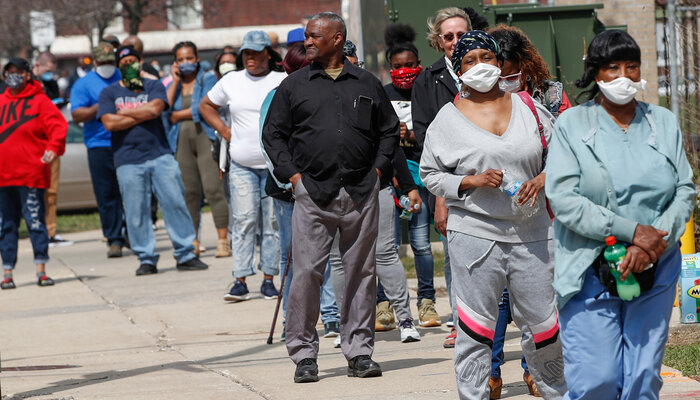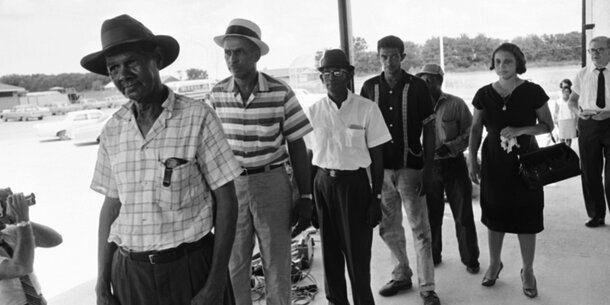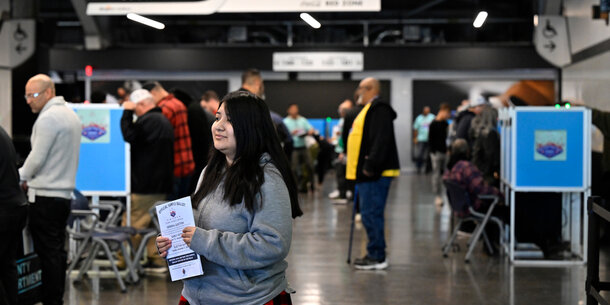Over the past decade, scholars have studied myriad ways in which certain state voting rules make participation disproportionately difficult for Americans of color — including strict voter ID laws, lines faced on Election Day, and other facets of our election system. This analysis catalogs some of the most prominent research findings on the negative impact of voting restrictions on voters of color.
There is a large and growing pile of evidence that strict voter ID laws disproportionately impact voters of color.
- Using county-level turnout data around the country, researchers demonstrated that the racial turnout gap grew when states enacted strict voter ID laws.
- Researchers have also looked specifically at the turnout of individuals in North Carolina without proper identification, and they found that the enactment of the law reduced turnout. The turnout effects continued even after the strict voter ID law was repealed.
- Another study shows that voters in Texas who would be barred from voting absent the state’s “Reasonable Impediments Declaration” (a court-ordered remedy allowing voters without proper IDs to participate) are disproportionately Black and Latino. The study argues that its “findings indicate that strict identification laws will stop a disproportionately minority, otherwise willing set of registered voters from voting.”
- An article using a similar methodology and administrative records found that voters of color in Michigan were more likely to show up to the polls without proper identification.
- Yet another study used survey data to demonstrate that voters of color in states across the country lacked access to the needed IDs to vote in their state.
- While some studies have argued that voter IDs have little effect on overall turnout, it is clear that voters of color are less likely to have the IDs needed to participate.
Restrictions on Sunday voting — such as those proposed last year in Georgia and Texas — would fall disproportionately on voters of color.
- Our research showed that voters of color were substantially more likely to vote on Sundays in Georgia than white voters.
- Another study argues that these Sunday voters do not seamlessly transition to other days after cuts are made. For example, when Sunday voting was outlawed in Florida in 2012, Black voters who voted on Sunday in 2008 were especially likely to abstain from voting.
Voters of color consistently face longer wait times on Election Day — lines that would be exacerbated by cutting alternative options, such as vote-by-mail or expansive early voting hours.
- Our report from 2020 indicates that voters of color around the country reported longer wait times in the 2018 midterms, using self-reported wait times from a national survey.
- Other researchers have used cellphone data to demonstrate the same thing: waits are longer in neighborhoods with more racial and ethnic minorities.
- Other research — including work from the Brennan Center — has also used administrative data to show that polling places with fewer white voters have more slowdowns.
Even vote-by-mail options, however, don’t completely level the playing field. Voters of color face more difficulties voting by mail, too.
- Our research shows that mail ballots were rejected at much higher rates than those of white voters in the Georgia primary in 2020.
- Other studies have found that this was true in Georgia and Florida’s 2018 general elections, too.
Polling place consolidation is also especially harmful for the turnout of racial and ethnic minorities.
- The Brennan Center authored the first academic study documenting the turnout effects of the Covid-19 pandemic. We showed that polling place consolidation severely depressed turnout in Milwaukee’s presidential primary — and that the effects were even larger for Black than white voters.
- This joins other research showing that voters of color are disproportionately impacted by polling place closures. This may be due to worse transportation access.





